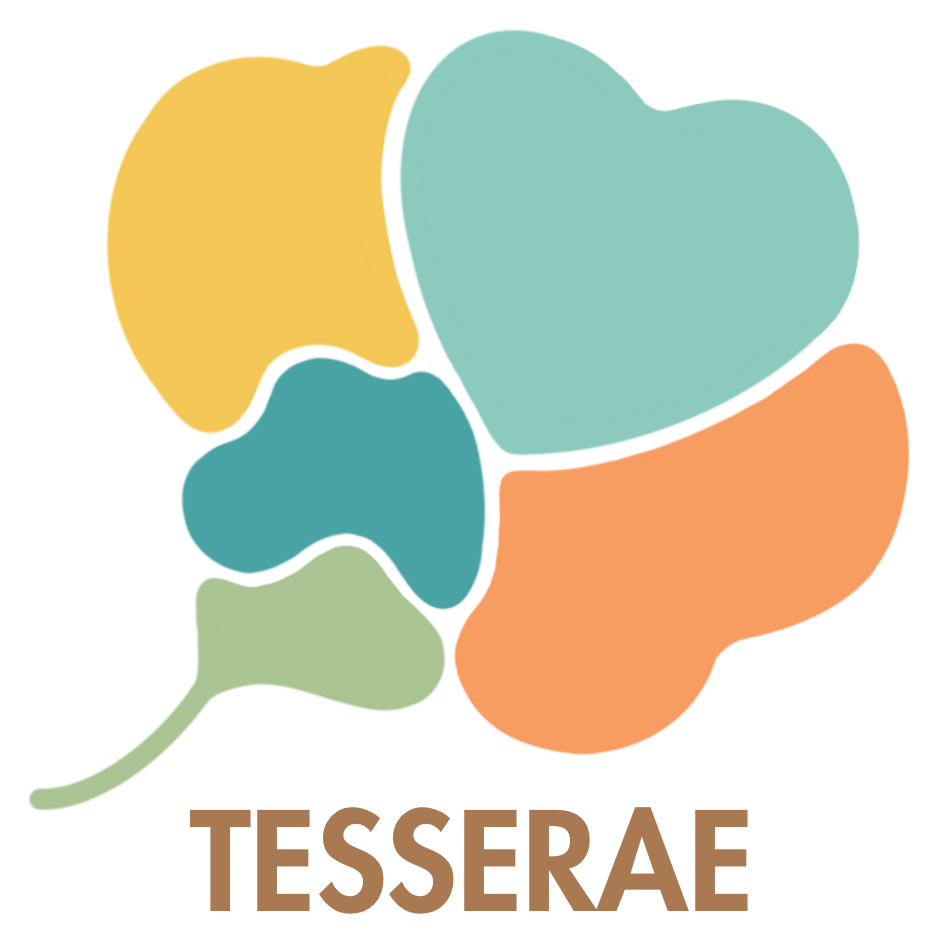Is your child struggling to sit still during lessons, constantly losing their homework, or finding it nearly impossible to focus on tasks? If these behaviours sound familiar, you might be wondering whether your child has Attention Deficit Hyperactivity Disorder or ADHD.
In Singapore, studies suggest that ADHD affects approximately 5-8% of school-aged children, though many cases go undiagnosed. Many parents struggle to differentiate between symptoms of ADHD, or whether their actions are just part of their personality.
At Tesserae, we understand this difficulty, and are here to guide you through next steps. We specialise in collaborative ABA therapy to support individuals with ADHD, as well as support the family on navigating the journey ahead.
What is ADHD in Singapore?
Attention deficit hyperactivity disorder or ADHD is a neurodevelopmental condition that affects how the brain develops and functions, particularly in areas that control attention, hyperactivity, and impulse control. In Singapore, getting a proper ADHD diagnosis involves understanding the symptoms, causes, and different subtypes of this condition.

Understanding ADHD Symptoms in Children
ADHD symptoms typically fall into three main categories: inattention, hyperactivity, and impulsivity. Children with inattentive symptoms might daydream excessively, forget instructions, or lose their belongings frequently. Those with hyperactive-impulsive symptoms may fidget constantly, interrupt others, or act without thinking about consequences.
What makes ADHD diagnosis tricky is that these behaviours must be present across different settings, not just at home or just at school. They also need to interfere with your child’s daily life and learning.
ADHD Subtypes: Predominantly Inattentive, Predominantly Hyperactive-Impulsive, and Combined
ADHD presents differently in each child. The 3 main types are:
- Predominantly Inattentive: This involves difficulty focusing, following instructions, and staying organised. These children might seem to zone out during conversations or struggle to complete tasks as they are easily distracted.
- Predominantly Hyperactive-Impulsive: This shows up as constant movement, difficulty sitting still, and acting without thinking. These children might climb on furniture, interrupt others frequently, or have trouble waiting their turn.
- Combined Type: This includes symptoms from both categories. This is actually the most common form of ADHD, affecting most children with the condition.
- Predominantly Inattentive: This involves difficulty focusing, following instructions, and staying organised. These children might seem to zone out during conversations or struggle to complete tasks as they are easily distracted.
Understanding which type your child has helps tailor the most effective treatment approach.
Diagnosing ADHD in Singapore: The Step-by-Step Process
A diagnosis of ADHD isn’t just a label; it’s a pivotal step that opens doors to a clearer understanding and more effective support. As a parent, you’re likely wondering, “What’s the point of all this?” and “Is a diagnosis really necessary?”.
In Singapore, getting an official diagnosis is the key to unlocking a range of resources and accommodations that can significantly help your child, particularly in their education and development. It can also offer peace of mind, replacing the confusion of what’s happening with the clarity of a name for the challenges your child is facing.

Why Bother with an ADHD Diagnosis? The Pros and Cons
So, why go through the often lengthy process of getting a formal diagnosis? Tactically, a diagnosis provides official documentation that can be presented to schools and other institutions. This is crucial for securing things like exam accommodations, which might include extra time for tests, a quiet room to sit exams in, or breaks during long papers. These adjustments can make a huge difference, helping to level the playing field so your child can demonstrate what they know without being hampered by their symptoms.
On the flip side, some parents worry about the potential stigma of a diagnosis. It’s a valid concern. You might think, “Will this label stick with my child?” or “Will it affect their future prospects?” While there can be some societal misconceptions about ADHD, the benefits of a diagnosis in terms of accessing support usually far outweigh the potential downsides. It’s about empowering your child, not limiting them.
Is ADHD Considered a Disability?
In Singapore, ADHD is recognised as a neurodevelopmental condition that can impact learning, behaviour, and daily functioning. However, unlike conditions such as Autism Spectrum Disorder (ASD) or Global Developmental Delay (GDD), ADHD is not always automatically classified as a disability under government frameworks. Whether it is treated as a disability often depends on the severity of challenges and the context (education, employment, or social services).
- ADHD – Seen as a neurodevelopmental condition; may qualify for Special Educational Needs (SEN) support in schools, but not always formally labelled a “disability” unless symptoms are severe.
- ASD (Autism Spectrum Disorder) – More consistently recognised as a developmental disability; children often qualify for early intervention, school accommodations, and support services.
- GDD (Global Developmental Delay) – Typically classified as a disability due to broad delays across multiple developmental domains; usually eligible for government-funded support and intervention programmes.
In short, ADHD sits in a grey area: it is recognised and supported in schools and therapy settings, but compared to ASD or GDD, it is less often formally treated as a disability unless the impact is significant.
The assessment process for children with ADHD
The ADHD assessment process is quite thorough and involves ruling out other conditions that might cause similar symptoms, such as anxiety or learning disorders. It usually starts with a detailed interview about your child’s developmental history, current symptoms, and how these affect daily life. Healthcare professionals will use standardised tools like the Conners’ Rating Scales or the ADHD Rating Scale-IV.
Your child may undergo psychological testing to assess attention, memory, and executive functioning skills. Some assessments include computerised tests that measure sustained attention and response time. The entire process can take several weeks, as professionals need to gather information from multiple sources and observe symptoms over time.
Teachers play a crucial role in this process. They’ll complete behaviour rating scales and provide observations about your child’s functioning in the classroom. This school input is essential because ADHD symptoms must be present in at least two different settings for a diagnosis.
Public vs. private ADHD diagnosis
Choosing between public and private healthcare for a diagnosis is a common question. Both public and private healthcare systems in Singapore offer ADHD assessments, each with distinct advantages. Public healthcare through polyclinics and restructured hospitals is more affordable, with government subsidies. However, waiting times can stretch over a few months for specialist appointments.
Private healthcare offers shorter waiting times, often just weeks rather than months. The assessment process might be more comprehensive, with longer consultation periods and additional testing options.
Consider your family’s timeline and financial situation when choosing. If symptoms are severely affecting your child’s school performance or family life, private assessment might be worth the investment for quicker intervention.
At Tesserae, our Clinical Director Dr. Dominic Leong is able to screen and assess potential symptoms for ADHD, and provide guidance on the support your child requires.
ADHD Treatment in Singapore: Therapy and Medication Options
Treatment for ADHD in Singapore combines multiple approaches tailored to each child’s needs. The goal isn’t to “cure” ADHD but to help children manage symptoms and reach their full potential through various interventions.

Therapy options for ADHD in Singapore
The 3 main types of therapy that support children with ADHD are:
- Applied Behaviour Analysis (ABA) Therapy: Focuses on helping children with ADHD improve focus, follow routines, and manage impulsive behaviours. Using clear structure and positive reinforcement, ABA builds skills step by step.
- Cognitive Behavioural Therapy (CBT): Conducted by clinical psychologists is particularly helpful for older children and teenagers with ADHD. It teaches them to recognise negative thought patterns and develop problem-solving skills. CBT can address anxiety or low self-esteem that often develops alongside ADHD.
- Occupational Therapy (OT): This helps by focusing on how a child interacts with their environment and routines. Specific interventions include organizing physical space, task materials, using sensory supports, managing transitions, planning daily tasks, and supporting executive functioning skills (time management, task completion, perceptual-motor skills).
Parent training programmes are also crucial components of ADHD treatment. These sessions teach families how to create structured environments, communicate effectively, and support their child’s development.
Medication Management for ADHD
Medication for ADHD is usually considered when symptoms are moderate to severe and strongly affect school, home, or social life. For younger children, therapy and parent training are recommended first, while school-aged children may benefit from combining therapy with medication. A psychiatrist should always guide and monitor treatment to ensure safety and effectiveness.
When we talk about ADHD medication, these medications appear to work by affecting certain chemical messengers, or neurotransmitters, particularly dopamine and norepinephrine. These two chemicals are thought to be quite important for things like maintaining focus, paying attention, and exercising impulse control. Medication decisions should always be made with a psychiatrist.
How can ABA therapy help with ADHD?
At Tesserae, we believe that collaborative ABA is highly effective for children with ADHD. That’s because ABA focuses on building practical skills, strengthening positive behaviors, and teaching strategies that help children regulate themselves across different settings. For children with ADHD, this structured and evidence-based approach supports attention, self-management, and prosocial skills that are essential for learning and daily life.

Key benefits of ABA therapy for ADHD:
- Improves focus and attention – Breaks tasks into manageable steps and teaches strategies to stay on task.
- Strengthens self-regulation – Through reinforcement of positive coping strategies and guidance in managing impulsivity.
- Supports routines – Helps children follow daily schedules, transitions, and classroom expectations.
- Tailored to the child – Every programme is personalised, ensuring strategies match the child’s unique strengths and challenges.
By focusing on ABA therapy, we give children with ADHD structured, consistent support, while also working alongside other therapies when needed, to help them thrive at home, in school, and in social settings. We also work alongside other therapies and medical providers where needed, ensuring support is comprehensive and well-coordinated.
Want to understand how ABA can help your child with ADHD?
Supporting Your Child with ADHD at School and Home
Creating supportive environments both at school and at home is essential for children with ADHD to thrive. Singapore’s education system offers various accommodations, while parents can implement strategies to help their children succeed.

Partnering with Schools: MOE's Support Framework
The Ministry of Education (MOE) provides several support systems for students with ADHD through its Special Educational Needs (SEN) framework. Schools can offer accommodations like extended time for exams, frequent breaks during lessons, or preferential seating arrangements to minimise distractions.
Mainstream schools in Singapore are increasingly equipped to support children with ADHD. Teachers receive training on classroom management strategies that benefit all students, not just those with special needs. Some schools have dedicated SEN coordinators who work with parents and teachers to develop individualised support plans.
For children who need more intensive support, Singapore offers specialised schools and programmes. However, most children with ADHD can succeed in mainstream schools with appropriate accommodations. The decision depends on your child’s specific needs and how well they respond to support measures in regular classrooms.
Home-Based Strategies and Resources
Creating structure at home helps children with ADHD manage their symptoms more effectively. Establish consistent daily routines for morning preparations, homework time, and bedtime. Use visual schedules or charts to help your child understand expectations and track their progress.
Effective communication involves giving clear, simple instructions one at a time. Instead of saying “Go upstairs, brush your teeth, put on your pyjamas, and get into bed,” break it down into individual steps. Positive reinforcement works better than punishment – acknowledge good behaviour immediately and specifically.
Teaching your child self-management skills builds confidence and independence. Help them learn to recognise when they’re feeling restless or distracted, and practice coping strategies together. This might include taking deep breaths, doing jumping jacks, or using fidget tools to help with concentration.
Disclaimer: This article is for informational purposes only and does not constitute medical advice. Please consult with qualified healthcare professionals for personalised diagnosis and treatment recommendations for your child.
Content
Book a free discovery call with us
